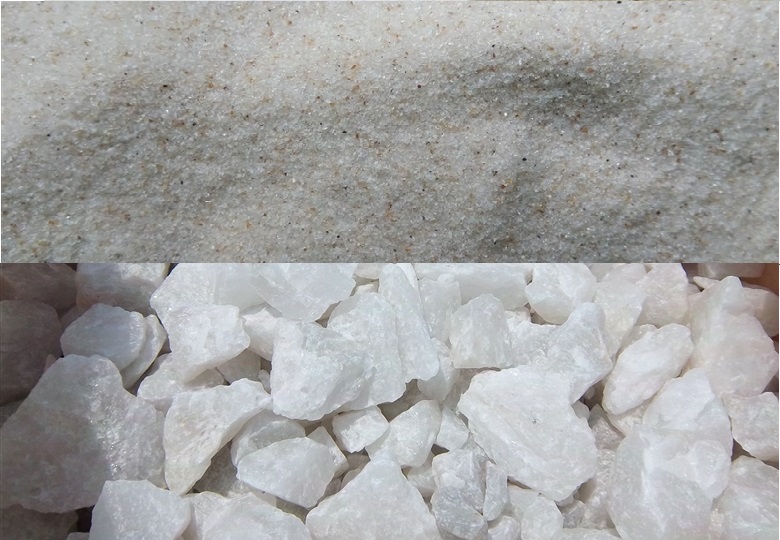
Quartz is one of the main rock-forming minerals, generally referred to as low-temperature quartz (α-quartz), which is the most widely distributed mineral in the quartz group of minerals. Quartz in a broad sense also includes high-temperature quartz (β-quartz) and coesite.
Quartz is a mineral composed of silicon dioxide, chemical formula SiO2. Pure quartz is colorless and transparent, and the Greeks called it “Krystallos”, which means “white ice”, and they believed that quartz was durable and strong ice.
Quartz powder (same as quartz sand) is also called silica powder. Quartz powder is a hard, wear-resistant and chemically stable silicate mineral. Its main mineral composition is SiO2, and its bulk density (20-200 mesh is 1.5). Its chemical, thermal and mechanical properties have obvious anisotropy. , Insoluble in acid, slightly soluble in KOH solution, melting point 1750°C.
After the quartz stone mined from the mine is processed, the product with a fineness below 120 mesh (less than 120 mesh) is called quartz sand. Products with more than 120 meshes are called quartz powder.
Uses: Manufacture of glass, refractory materials (charge), smelting ferrosilicon, coatings, rubber fillers, metallurgical fluxes, ceramics, grinding materials, metal surface treatment, etc. It has a strong ability to resist acidic medium corrosion in construction, Preparation of acid-resistant concrete and acid-resistant mortar.
The ultra-fine deep processing ball mill and classification production line produced by Shandong ALPA Powder Technology Co., Ltd. is designed according to the processing requirements of hard materials. The interior features alumina wear protection and alumina grinding media. Low speed, low wear; optimized length-to-diameter ratio, no over-grinding phenomenon; low energy consumption, no pollution, meeting environmental protection standards; stable feeding, high grinding efficiency, is a good choice for ultra-fine quartz powder processing industry.
